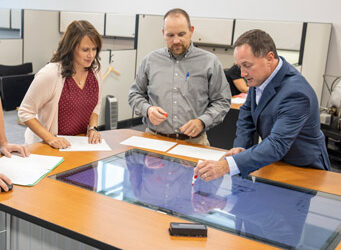What is a Specification Developer – Revisited
Back in 2016 I provided a post regarding Specification Developers; what they are, what’s involved in being one, etc. While we didn’t realize at the time it was quite an exciting subject…it turned out to be one of the most viewed posts in our company’s history.
Call it Throwback Thursday, here is the post once again, with a few updates. Enjoy.
A specification developer can concentrate on developing a product idea, obtaining intellectual property protection and creating a sales plan — and leave the manufacturing to others.
The FDA website (www.fda.gov) provides this definition for a Specification Developer:
Specification Developer – Develops specifications for a device that is distributed under the establishment’s own name but performs no manufacturing. This includes establishments that, in addition to developing specifications, also arrange for the manufacturing of devices labeled with another establishment’s name by a contract manufacturer.
Many startup and early-stage companies fall within the definition of a specification developer. It is quite common for an early-stage company to own the intellectual property and the sales channel for its new idea and outsource all of the remaining activities, such as manufacturing, sterilization, packaging, etc. While virtually all aspects of the product development and manufacturing processes can be outsourced, the specification developer remains ultimately accountable for the safety and efficacy of the product. An entrepreneur or startup company can decide to operate as a “virtual” company and forgo the bricks-and-mortar model, but the company must create and maintain a basic quality management system (QMS) and establish contractual agreements with partners in order to meet the requirements of a specification developer.
What the FDA wants
The FDA requires a specification developer to meet certain quality system requirements. While this article is not meant to be an exhaustive review of all requirements, it is intended to shed light on the subject and add some definition to the often-used phase.
The FDA provides guidance documents to help those who are developing new products or commercializing a medical device understand how to properly document, manufacture and market their medical devices and meet FDA requirements. These guidance documents, definitions and regulations create a pathway for ensuring the specific steps are followed and the proper documentation is in place. If you are an entrepreneur, a startup company or an established company looking to simplify your internal infrastructure, operating as a specification developer is often a great path to consider.
How it works
So, what’s involved and what does it look like? First and foremost, do your homework and review the information provided by the FDA regarding the requirements of a specification developer. Second, unless you have the resources in-house, seek the advice of a regulatory consultant to determine what the QMS, supplier quality agreements and other requirements are for your enterprise.
A company that chooses the specification developer route has fewer quality management system requirements to meet than a medtech manufacturer. Here’s what it does have to do:
- Create and maintain a basic QMS that meets the FDA requirements of a specification developer. This QMS includes a number of standard operating procedures and documents such as a quality manual, management responsibility, design controls, corrective and preventative actions, device master record, complaint files and others. The specification developer QMS typically is not required to include procedures that are executed and maintained by a contract manufacturer, such as manufacturing assembly procedures, environmental procedures, equipment qualification records, etc.
- Develop and maintain one or more supplier quality agreements (SQAs). An effective SQA defines the roles and responsibilities of the specification developer and its key suppliers. It helps “draw the line,” so to speak, and determine which party is responsible for a given activity. While SQAs often vary in scope and the demarcation of responsibilities can be fine-tuned, both the specification developer and the supplier must meet the regulations that apply to each enterprise.
Advantages
The specification developer route offers a number of advantages, depending on your goals. It allows companies to focus on their strengths and not get bogged down with operating a device-development or manufacturing operation.
Many companies have created a medical device idea, attained intellectual property around it and want to sell the product without the burden of an extensive manufacturing infrastructure. This model also allows companies to use a broad range of expertise available through outsourcing to experts in materials and manufacturing processes.
Jim Medsker is president of Keystone Solutions Group. He has more than 25 years of experience in product development, startups and operations in the medical, automotive, aerospace and industrial markets.
